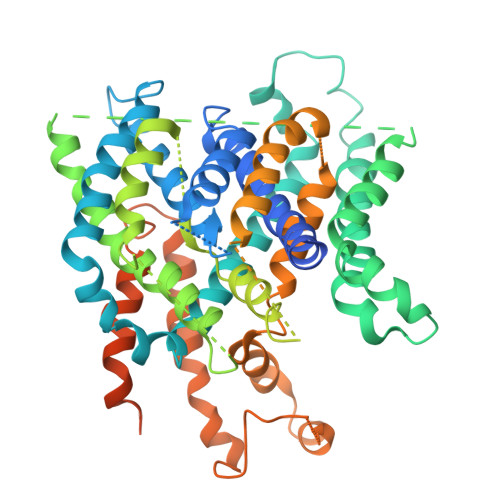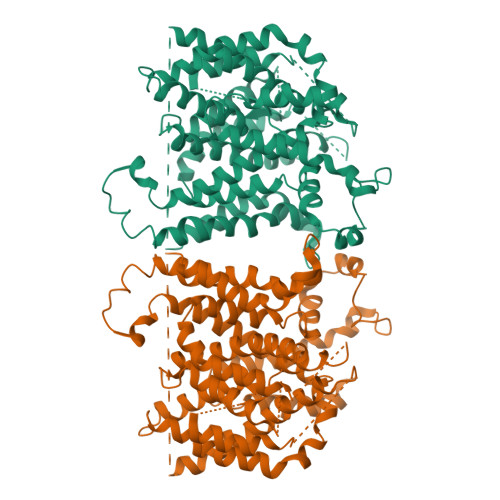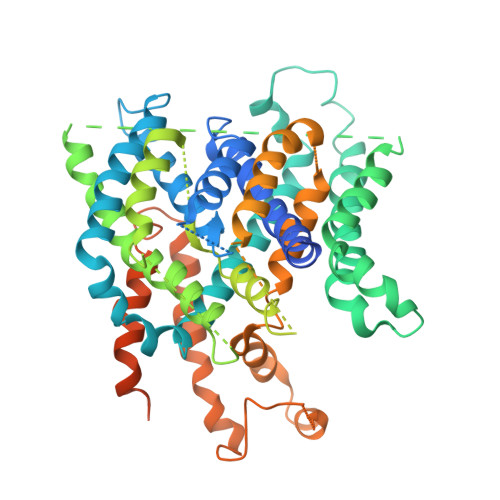Structure of Bor1 supports an elevator transport mechanism for SLC4 anion exchangers.
Thurtle-Schmidt, B.H., Stroud, R.M.(2016) Proc Natl Acad Sci U S A 113: 10542-10546
- PubMed: 27601653
- DOI: https://doi.org/10.1073/pnas.1612603113
- Primary Citation of Related Structures:
5L25 - PubMed Abstract:
Boron is essential for plant growth because of its incorporation into plant cell walls; however, in excess it is toxic to plants. Boron transport and homeostasis in plants is regulated in part by the borate efflux transporter Bor1, a member of the solute carrier (SLC) 4 transporter family with homology to the human bicarbonate transporter Band 3. Here, we present the 4.1-Å resolution crystal structure of Arabidopsis thaliana Bor1. The structure displays a dimeric architecture in which dimerization is mediated by centralized Gate domains. Comparisons with a structure of Band 3 in an outward-open state reveal that the Core domains of Bor1 have rotated inwards to achieve an occluded state. Further structural comparisons with UapA, a xanthine transporter from the nucleobase-ascorbate transporter family, show that the downward pivoting of the Core domains relative to the Gate domains may access an inward-open state. These results suggest that the SLC4, SLC26, and nucleobase-ascorbate transporter families all share an elevator transport mechanism in which alternating access is provided by Core domains that carry substrates across a membrane.
Organizational Affiliation:
Department of Biochemistry and Biophysics, University of California, San Francisco, CA 94158.
















